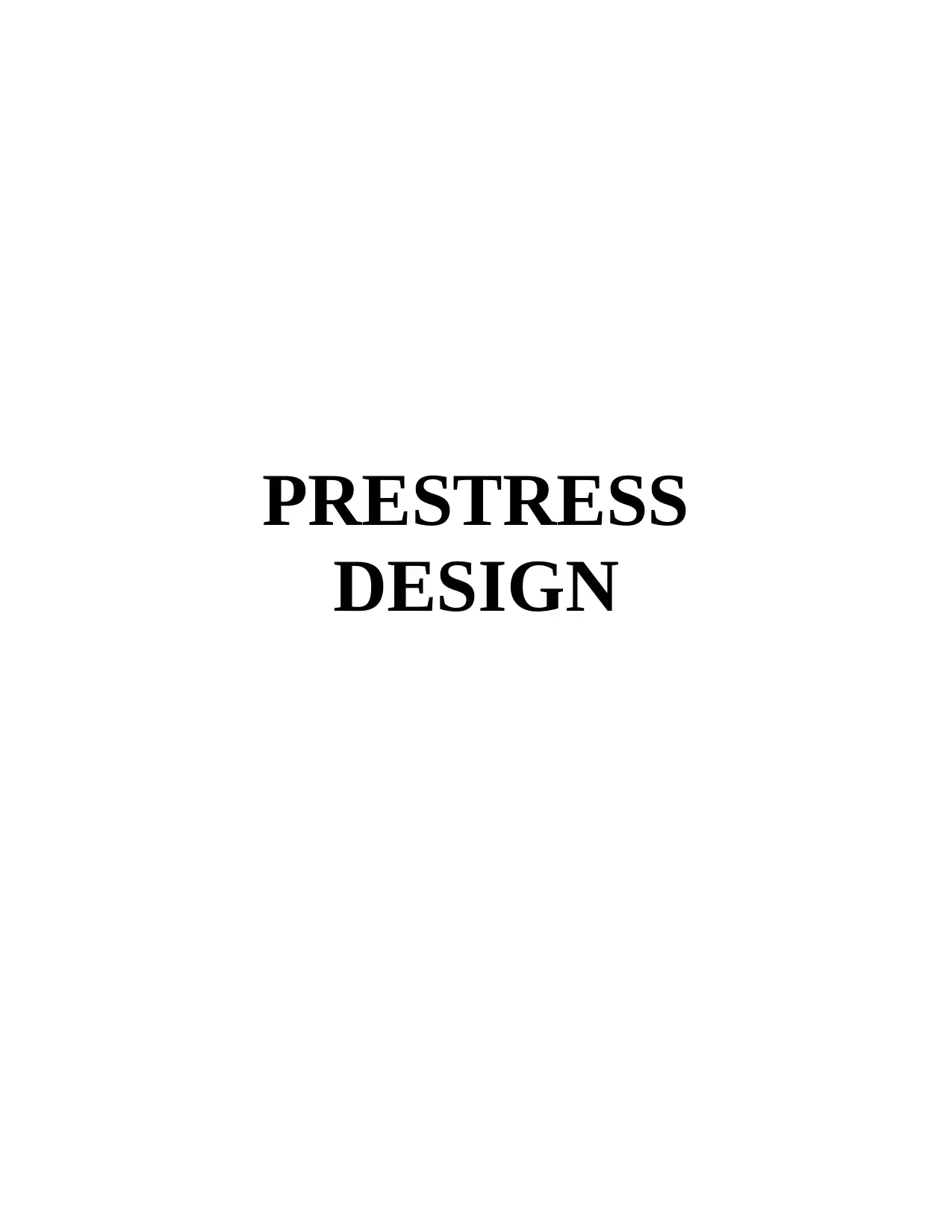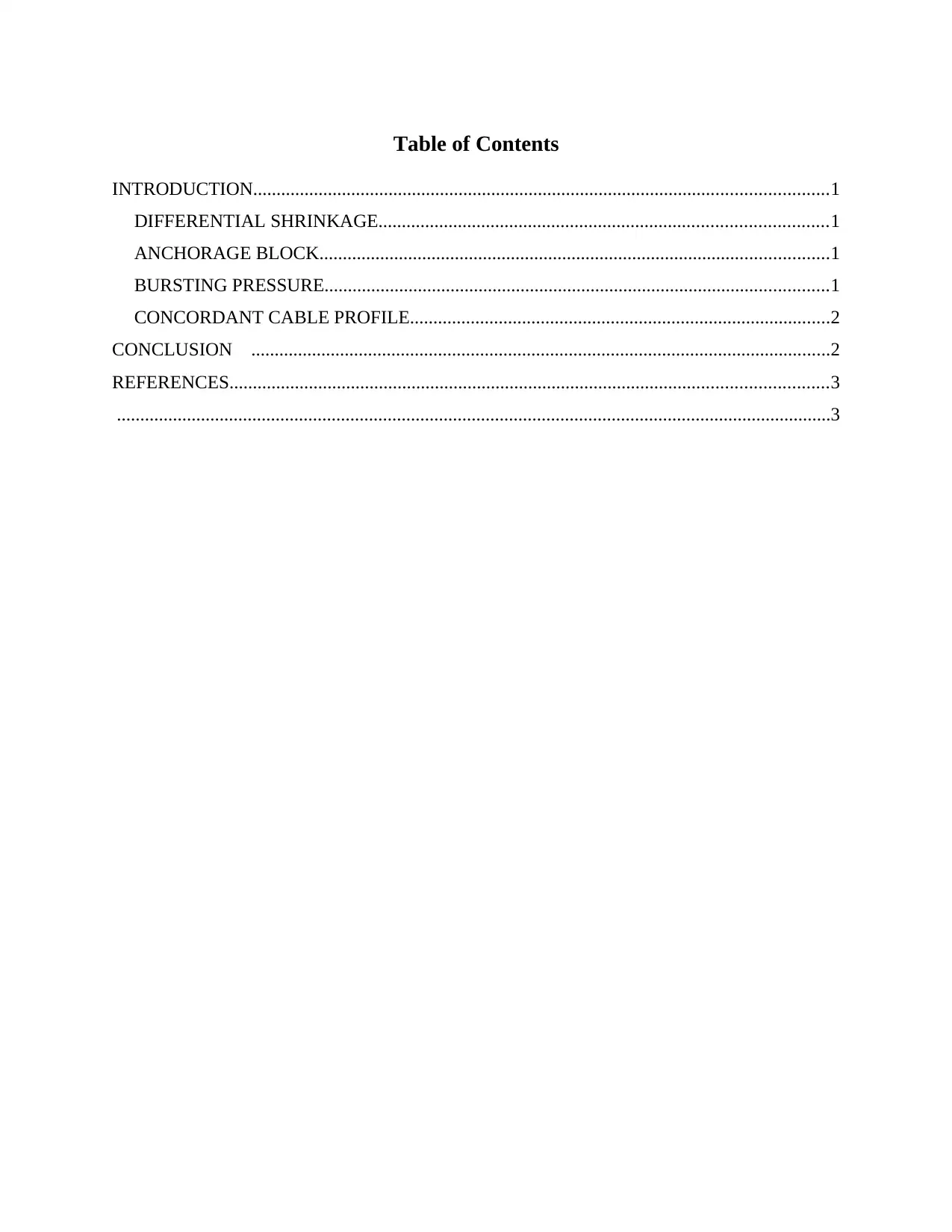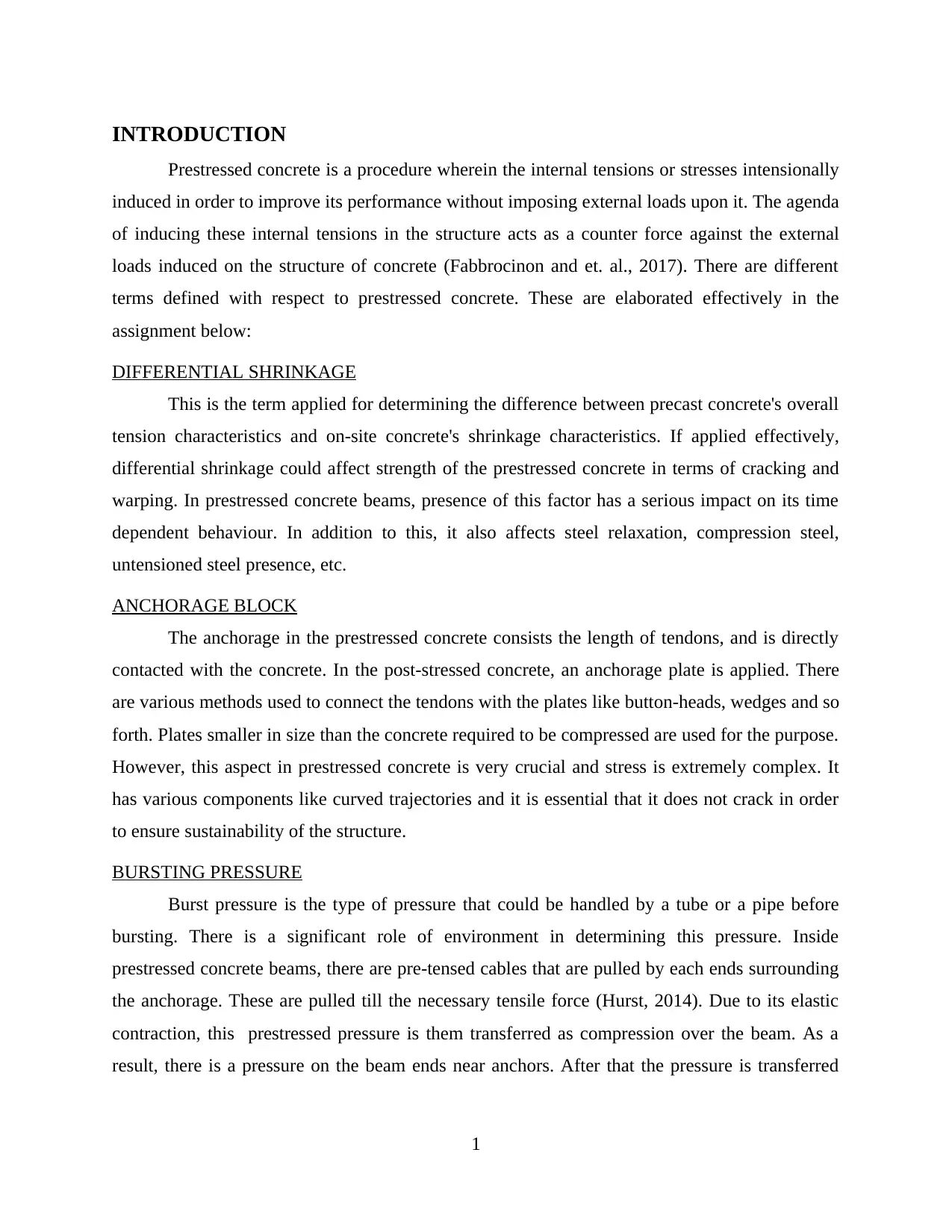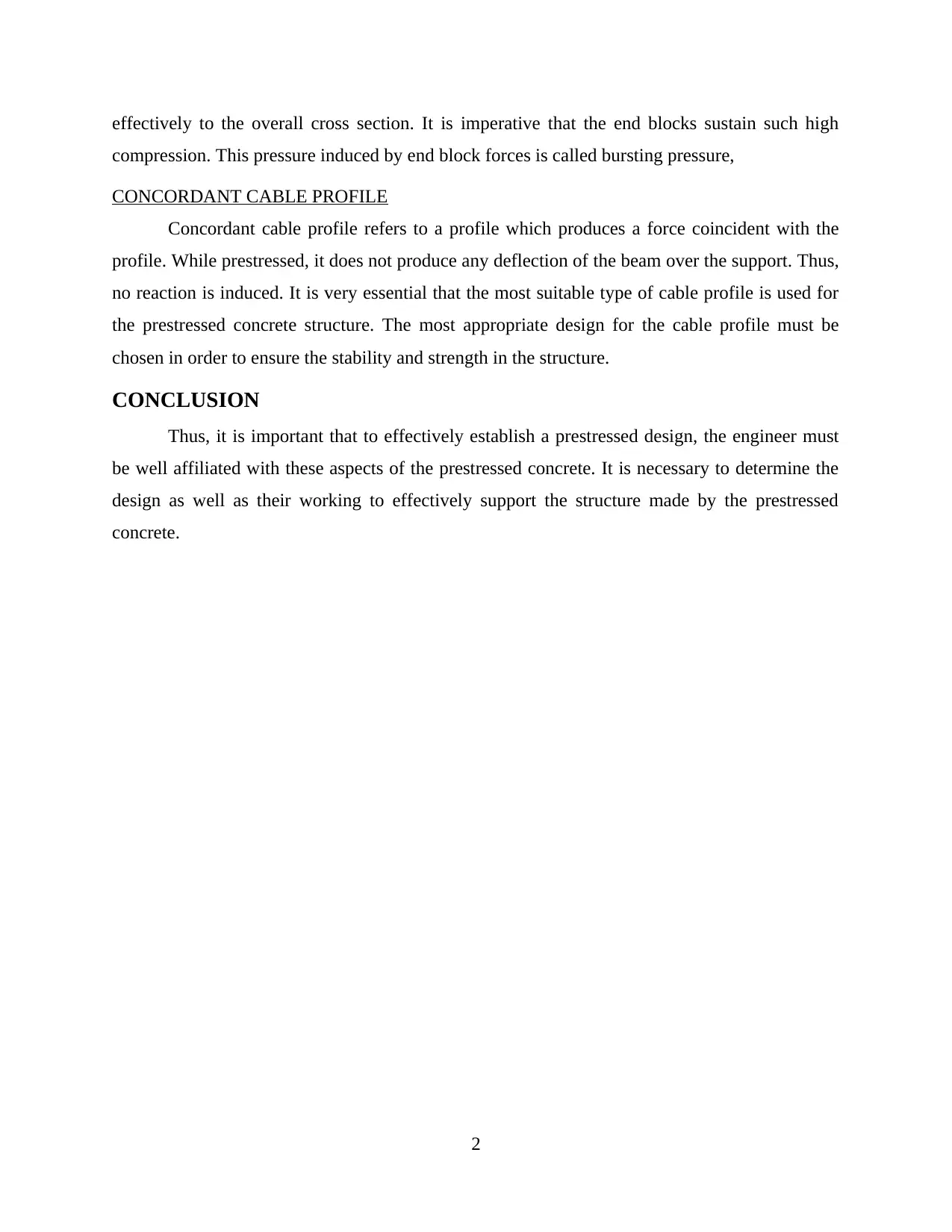Civil Engineering: Prestressed Concrete Design and Analysis Report
VerifiedAdded on 2020/12/28
|5
|620
|361
Report
AI Summary
This report delves into the core concepts of prestressed concrete design, offering a detailed analysis of its critical components. It begins by defining prestressed concrete and its advantages, followed by an examination of differential shrinkage and its effects on concrete structures. The report then explores anchorage blocks, explaining their function in transferring prestressing forces and the stresses involved. Bursting pressure is analyzed, discussing the impact of environmental factors and the pressure exerted on beam ends. Finally, the report examines concordant cable profiles, emphasizing their importance in achieving structural stability. The report concludes with a summary of the key concepts, emphasizing the need for engineers to be well-versed in these aspects for effective prestressed concrete design. The report is supported by references to relevant books and journals, providing a comprehensive overview of the subject.
1 out of 5







![[object Object]](/_next/static/media/star-bottom.7253800d.svg)